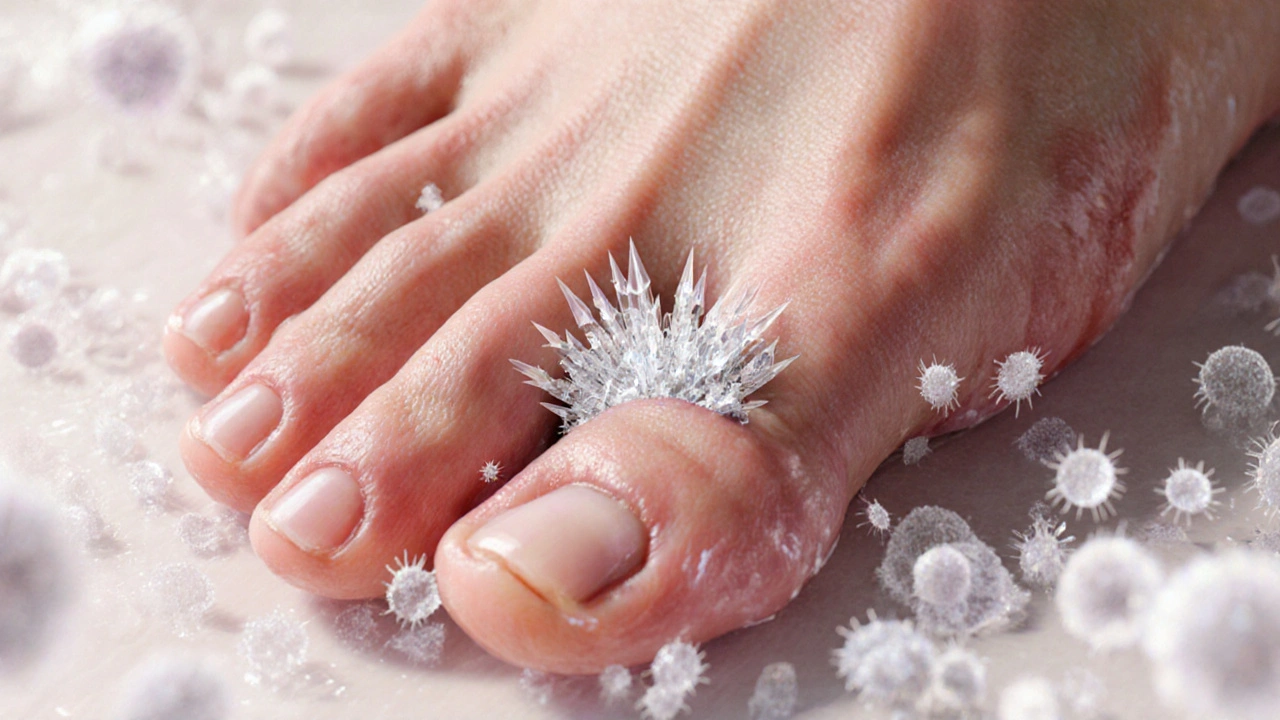Gout and the Immune System: Essential Facts & Management
Learn how gout triggers the immune system, why inflammation occurs, and the best medical and lifestyle steps to control pain and prevent long‑term complications.
Continue ReadingThink sudden, brutal joint pain that wakes you at night — that’s gout for many people. Gout happens when uric acid crystals build up in a joint and trigger intense inflammation. It often hits the big toe first, but ankles, knees, wrists, and fingers can flare too.
How do you know it's gout? Look for rapid onset of severe pain, swelling, redness, and warmth over one joint. Attacks usually peak within 24 hours and can last days to weeks. Between attacks you might feel fine, but repeated flares can damage joints and reduce mobility.
Uric acid rises when your body makes too much or your kidneys don’t clear enough. Risk factors include genetics, obesity, high blood pressure, reduced kidney function, and certain medicines like diuretics. Meals heavy in purines — think red meat, organ meat, shellfish — and binge drinking (especially beer) often trigger attacks. Rapid weight loss and dehydration can also spark a flare.
Not all high-purine foods act the same. Vegetables like spinach and asparagus have purines but usually don’t cause flares as often as meat or seafood. Fructose-sweetened drinks are linked to higher gout risk, so watch sugary sodas and fruit juices.
For sudden attacks, doctors commonly recommend NSAIDs (like naproxen or ibuprofen), colchicine, or a short course of oral steroids. These reduce inflammation and pain; start treatment early for best results. If you have kidney disease, stomach ulcers, or certain meds, your choice may differ — talk to your clinician.
Long-term control aims to lower uric acid. Allopurinol and febuxostat are the main options; they stop crystals from forming and prevent future attacks. It’s common to stay on urate-lowering therapy for years. Your doctor will check blood uric acid and kidney function and may adjust doses. Don’t stop these medicines during a flare without guidance — doing so can make things worse.
Simple habits really help. Keep hydrated, lose weight gradually if needed, cut back on beer and sugary drinks, and limit high-purine meats. Eat more low-fat dairy, vegetables, whole grains, and cherries or cherry extract if you find they help. Regular exercise and controlling blood pressure and diabetes also reduce risk.
When should you see a doctor? Seek care if pain is extreme, a joint looks infected, you have a fever, or you get frequent attacks (two or more a year). If you develop kidney stones or your daily life suffers, ask about starting urate-lowering therapy.
Quick action helps. During a flare: rest the joint, apply ice, take prescribed anti-inflammatory meds early, and follow up with your doctor about prevention. With the right mix of immediate care and long-term control, most people can cut flares dramatically and protect their joints.
Aim for a clear uric acid target — usually below 6 mg/dL — and check labs every few months while changing doses. If you have complicated gout or frequent tophi, a rheumatologist can tailor treatment and speed recovery today.

Learn how gout triggers the immune system, why inflammation occurs, and the best medical and lifestyle steps to control pain and prevent long‑term complications.
Continue Reading
Gout pain is brutal— burning, throbbing, and often waking you in the middle of the night. Diclofenac sodium is one NSAID doctors hand out for relief, but how well does it really work? This article breaks down how diclofenac targets pain and swelling in gout, what you should watch out for, and how to use it safely. You'll also find handy tips for better results and advice on talking to your doctor about using diclofenac when gout flares happen.
Continue Reading